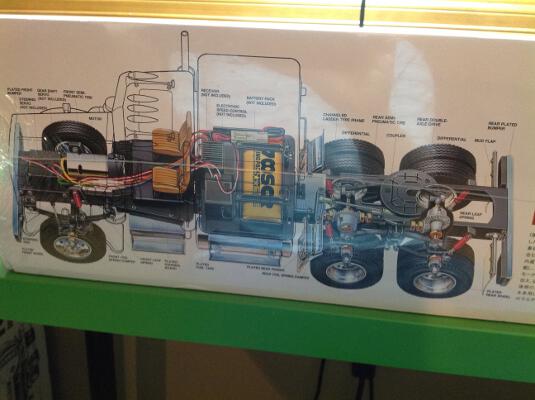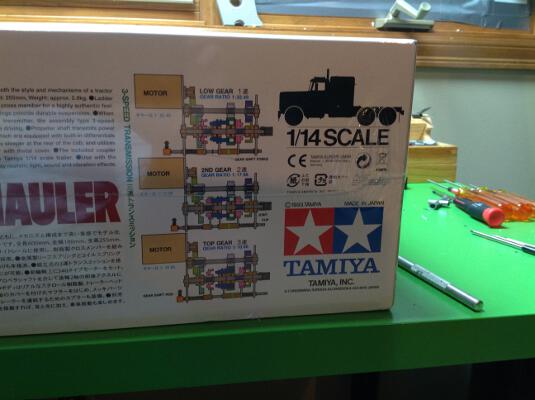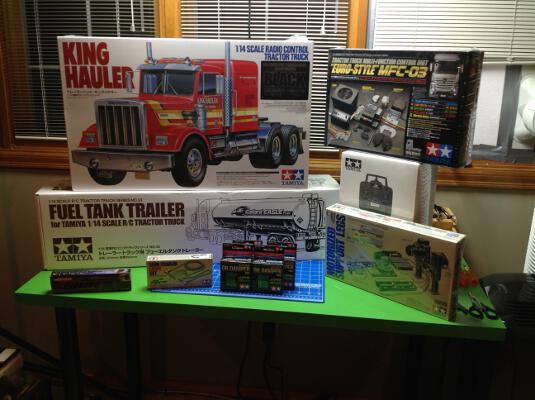

Here are some images from the sides of
the box. The first shows a cutaway internal view of all the
mechanical and electrical details. The second shows the 3-speed
transmission, a detail I was excited to build so I could learn how it
works. I had no idea that this one of the most complex mechanical systems in classic R/C,
though the original Bruiser transmission is much trickier. Keep
an eye on those gear ratios listed. I'll be trying to derive and
match them later.


